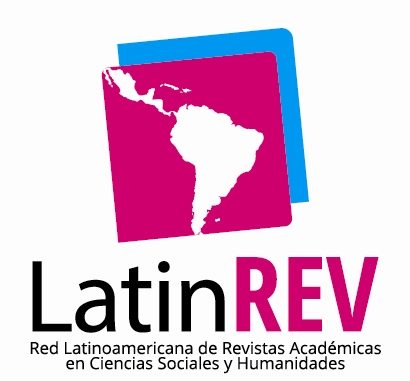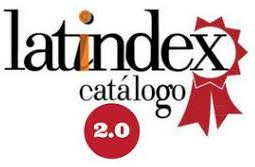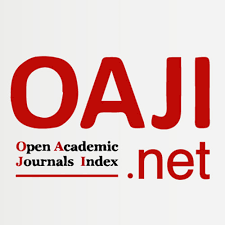Extranjeros en Varsovia durante la Segunda Guerra Mundial. Pasaportes genuinos y papeles falsos, internamiento, canje y exterminio
Resumen
Se presentan aquí los avances de investigación de un estudio comparativo sobre las experiencias de judíos extranjeros y polacos doble nacionales que estuvieron o pasaron por Varsovia durante la Segunda Guerra Mundial. Se focaliza principalmente sobre los argentinos y estadounidenses, con breves referencias a los de otros países. El estudio abarca tanto a ciudadanos genuinos como a portadores de papeles falsos y sus familiares inmediatos. Se analizan las semejanzas y diferencias en la evolución de su trato luego de la ocupación alemana y su encierro en el gueto de Varsovia hasta el inicio de su liquidación (Grossaktion). Asimismo, se describen las cambiantes políticas adoptadas por los alemanes hacia estos extranjeros según el estatuto de nación neutral o beligerante de los países de los cuales eran o se decían ciudadanos. En el caso de los portadores de papeles falsos, se mencionan algunas de las redes y modalidades para su obtención.Descargas
Citas
After World War II · Jewish Immigration to America. (2023). YIVO Online Exhibitions. https://immigrationusa.yivo.org/exhibits/show/immigrationstories/afterww2
Adler, S. (1982). In the Warsaw Ghetto 1940-1943: An Account of a Witness: The Memoirs of Stanislaw Adler. Yad Vashem.
Baskind, B. (1945). La grande épouvante: souvenirs d'un rescapé du Ghetto de Varsovie. Calmann-Lévy.
Bessette, I. (2010). Not All was Lost. A Young Woman's Memoir. 1939-1946. E-book 978-1-4535-485-4.
Birnbaum, I. (1991). Non Omnis Moriar. No moriré del todo. Memorias de una adolescente en el gueto de Varsovia. Editorial Milá.
Browning, Ch. R. (1978). The final solution and the German Foreign Office: a study of Referat D III of Abteilung Deutschland, 1940-43. Holmes & Meier.
Buergenthal, T. (2003). International law and the Holocaust. United States Holocaust Memorial Museum. https://collections.ushmm.org/search/catalog/bib91913
Chenkin, A. y Seligman, B. B. (2008). Jewish Population of the United States, 1953. The American Jewish Yearbook, 55.
Chylinski, T. H. (13 de noviembre de 1941). Poland on Nazi Party. Central Intelligence Agency. https://www.cia.gov/readingroom/docs/POLAND%20UNDER%20NAZI%20RULE%201941_0001.pdf
Conze, E., Frei, N., Hayes, P. y Zimmermann, M. (2010). Das Amt und die Vergangenheit: deutsche Diplomaten im Dritten Reich und in der Bundesrepublik. Karl Blessing Verlag.
Eisenbach, A. (1988). Kronika getta warszawskiego : wrzesień 1939- styczeń 1943. Czytelnik.
Foreign Relations of the United States, 1939. (1956). General: The British Commonwealth and Europe (Vol. II). M. F. Axton et al. (eds.). Government Printing Office. https://history.state.gov/historicaldocuments/frus1939v02/d615
Gawinecka-Woźniak, M. (2016). The visit of Fritz Henningsen in Warsaw in October 1939 as presented in the diplomat’s account. Zapiski Historyczne, LXXX. https://doi.org/mv9t
Goldstein, B. (1949). The Stars Bear Witness. The Viking Press.
Goldstein, B. (1952). Las estrellas son testigo. Acervo Cultural Editores.
Goñi, U. (2002). La auténtica Odessa. La fuga nazi a la Argentina de Perón. Paidós.
Hilberg, R. (1992). Perpetrators, Victims, Bystanders: The Jewish Catastrophe 1933-1945. Harper Collins.
Hilberg, R. (2005). La destrucción de los judíos europeos. Akal.
Hilberg, R., Staron, S. y Kermisz, J. (eds.) (1999) The Warsaw Diary of Adam Czerniakow. Prelude to Doom. Ivan R. Dee.
Katsh, A. I. (1965). Scroll of Agony: The Warsaw Diary of Chaim A. Kaplan. Macmillan.
Koblik, S. (1988). The stones cry out: Sweden’s response to the persecution of the Jews, 1933-1945. Holocaust Library.
Langbart, D. A. (1 de abril de 2018). We found ourselves living in the midst of a battlefield: The Experiences of the U.S. Consulate General in Warsaw on the Outbreak of World War II September 1939. American Diplomacy. https://americandiplomacy.web.unc.edu/2018/04/we-found-ourselves-living-in-the-midst-of-a-battlefield/
Langbart, D. A. (18 de mayo de 2021). The Approach of World War II: A View from the U.S. Embassy in Poland. The Text Message. https://text-message.blogs.archives.gov/2016/06/28/the-approach-of-world-war-ii-a-view-from-the-u-s-embassy-in-poland/
Meed, V. (1993). On Both Sides of the Wall: Memoirs from the Warsaw ghetto. Holocaust Library.
New York, U.S., Arriving Passenger and Crew Lists (including Castle Garden and Ellis Island), 1820-1957. Ancestry. https://www.ancestry.com/discoveryui-content/view/3018726820:7488?tid=&pid=&queryId=e9159cc60479ffe313247265df2f6bc4&_phsrc=nlp12&_phstart=successSource
Newton, R. C. (1995). El cuarto lado del triángulo. La “amenaza nazi” en la Argentina (1931-1947). Editorial del Libro.
Perle, Y. (1998). Khurbm Varshe. L’anéantissement de la Varsovie juive. Revue d’Histoire de la Shoah, 3(164), 102-168.
Person, K. (2010). Pawiak w świadomości mieszkańców okupowanej Warszawy. Kwartalnik Historii Żydów, (4), 411-423.
Polonsky, A. (ed.). (1990). A Cup of Tears. A Diary of the Warsaw Ghetto. Basil Blackwell / Institute for Polish-Jewish Studies.
Ras, M. (2020). Meir Berliner: el héroe argentino de Treblinka. Raíces. Revista Judía de Cultura, (124), 81-84.
Ras, M. (2021). Argentinos en Varsovia. 1939-1945 en R. Laham Cohen y E. Caselli (eds.), Antijudaísmo, antisemitismo y judeofobia. De la Antigüedad Clásica al atentado a la AMIA (pp. 199-221). Miño y Dávila editores.
Ras, M. (2023). El rol de Adolf Eichmann y la Embajada argentina en Berlín en la deportación de judíos con ciudadanía argentina. Historia y memoria. Ciclos, (60), 133-169. https://doi.org/mv9v
Rubin, A. (2002). Facts and fictions about the rescue of the Polish Jewry during the Holocaust (vol. 4. The panderers of illusions, the foreign citizenship). Arnon Rubin.
Sarna, J. D. (2014). From World-Wide People to First-World People: The Consolidation of World Jewry en E. Ben-Rafael, J. Bokser Liwerant y Y. Gorny (eds.), Reconsidering Israel-Diaspora Relations (pp. 60-65). Brill.
Schmitz, J. E. y Hart, B. W. (2022). A Crisis of Identity: Good Aliens, Bad Americans, or Bargaining Chips? U.S. Civilian Exchanges with the Third Reich during World War II. The International History Review, 44(6), 1269-1285. https://doi.org/mwbr
Seidman, H. (1997). The Warsaw Ghetto Diaries. Targum Press.
Seidman, N. (1996). Elie Wiesel and the Scandal of Jewish Rage. Jewish Social Studies, 3(1), 1-19.
Shneiderman, S. L. (ed.). (1945). Warsaw Ghetto: a Diary. L. B. Fischer.
Shneiderman, S. L. (ed.). (2007). The Diary of Mary Berg. Growing up in the Warsaw Ghetto. Oneworld.
Shneiderman, S. L. (ed.). (2013). Mary Berg. El gueto de Varsovia. Diario, 1939-1944. Sefarad Editores.
Shulman, A. (ed.). (1982). The Case of Hotel Polski. Holocaust Library.
Simon & Schuster Books. (22 de enero de 2015). History in Five: FDR’s Secret Enemy Exchange Program [Archivo de video]. Youtube. https://www.youtube.com/watch?v=BRAwQLi6vqY
Sloan, J. (ed.). (1958). Notes from the Warsaw Ghetto. The Journal of Emmanuel Ringelblum. Schocken Books.
Szereszewska, H. (1997). Memoirs from occupied Warsaw, 1940-1945. Vallentine Mitchell.
Szlengel, W. “Pasaportes” y “Una cuenta con Dios”. Poemas.
Turkow, J. (1977). Heroicas mujeres del ghetto de Varsovia. Biblioteca Popular Judía.
Turkow, I. (1995). C'était ainsi, 1939-1943: la vie dans le ghetto de Varsovie. Austral.
Walser, R. (2023). War Comes to Warsaw: September 1939. American Foreign Service Association. https://afsa.org/war-comes-warsaw-september-1939
Woods, R. B. (1975). Decision-Making in Diplomacy: The Rio Conference of 1942. Social Science Quarterly, 55(4), 901-918.
Zuckerman, Y. (1993). A surplus of memory: chronicle of the Warsaw Ghetto uprising. University of California Press.
Derechos de autor 2025 Marcia Ras, Samara Rose Angel

Esta obra está bajo licencia internacional Creative Commons Reconocimiento-NoComercial 4.0.

Historia & Guerra utiliza una licencia internacional Atribución-NoComercial 4.0 Internacional (CC BY-NC 4.0).
Usted es libre de:
- Compartir — copiar y redistribuir el material en cualquier medio o formato.
- Adaptar — remezclar, transformar y construir a partir del material.
- La licenciante no puede revocar estas libertades en tanto usted siga los términos de la licencia.
Bajo los siguientes términos:
Atribución — Usted debe dar crédito de manera adecuada, brindar un enlace a la licencia, e indicar si se han realizado cambios. Puede hacerlo en cualquier forma razonable, pero no de forma tal que sugiera que usted o su uso tienen el apoyo de la licenciante.
NoComercial — Usted no puede hacer uso del material con propósitos comerciales.
No hay restricciones adicionales — No puede aplicar términos legales ni medidas tecnológicas que restrinjan legalmente a otras a hacer cualquier uso permitido por la licencia.
Avisos:
No tiene que cumplir con la licencia para elementos del materiale en el dominio público o cuando su uso esté permitido por una excepción o limitación aplicable.
No se dan garantías. La licencia podría no darle todos los permisos que necesita para el uso que tenga previsto. Por ejemplo, otros derechos como publicidad, privacidad, o derechos morales pueden limitar la forma en que utilice el material.
El autor conserva todos los derechos de su obra sin restricciones y garantiza a Historia & Guerra el derecho de ser la primera publicación del trabajo. Asimismo, el autor podrá establecer acuerdos adicionales para la distribución no exclusiva de la versión de la obra publicada en la Revista (por ejemplo, situarlo en un repositorio institucional o publicarlo en un libro), con el reconocimiento de haber sido publicado primero en esta revista. No se permite utilizar la obra con fines comerciales.
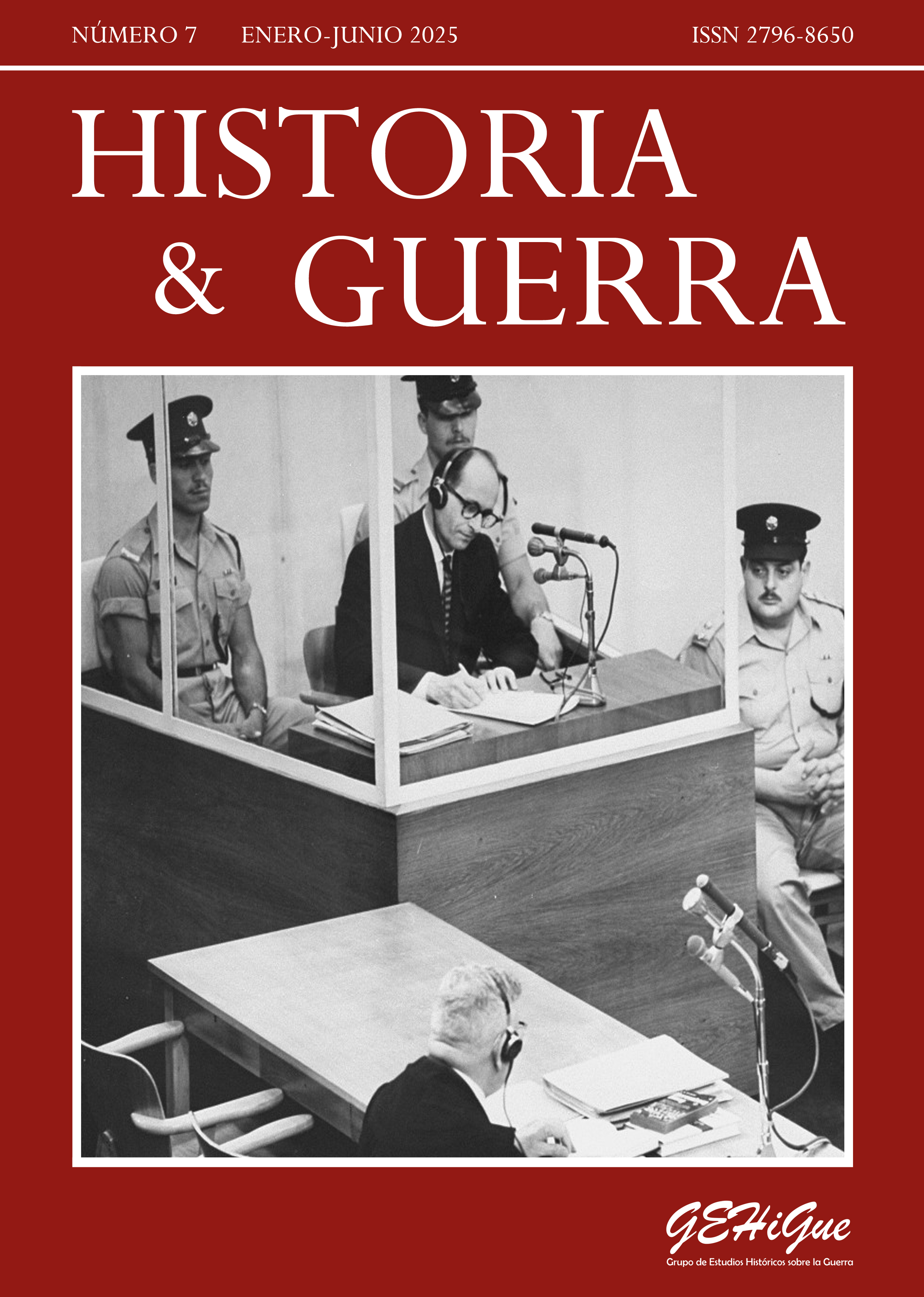






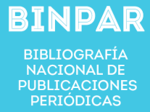

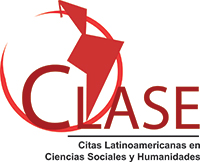



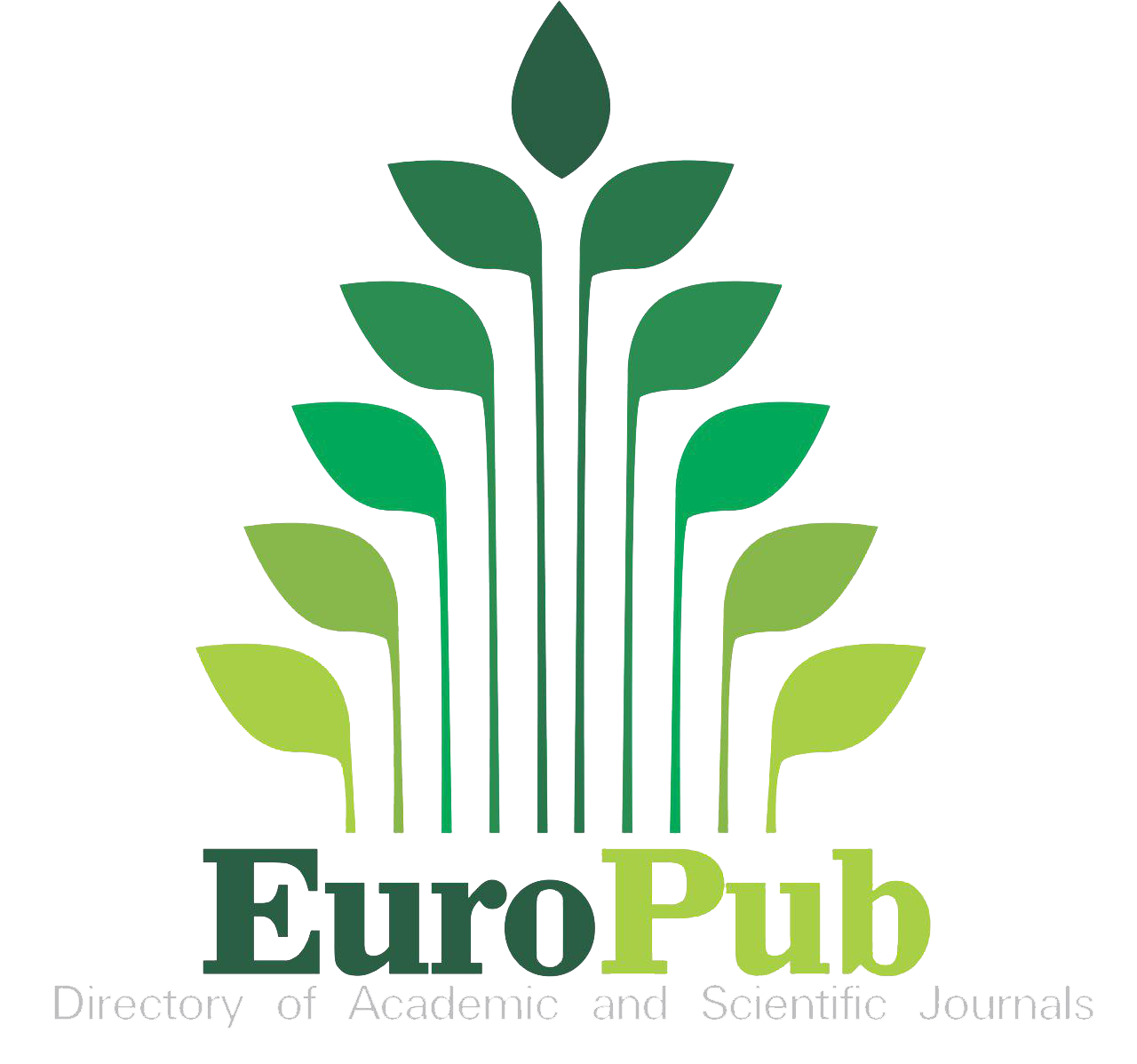
.jpg)
